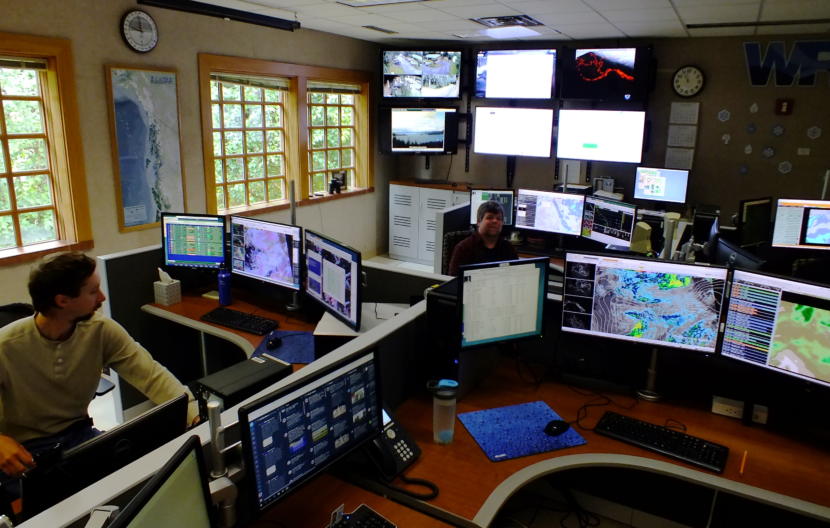
Tom Ainsworth’s last day of work was Friday, August 2.
The National Weather Service’s chief weather forecaster for Southeast Alaska is retiring after a long career that includes 17 years in Juneau.
Ainsworth remembers being about 10 years old when he dropped a not-so-subtle hint by circling a weather station kit in a Christmas catalog.
“We hoisted that baby out in the backyard and had a barometer inside the house,” Ainsworth said. “I kept a log of what the day’s temperatures were and cloud cover. And I had a rain gauge out in the backyard.”
Ainsworth grew up in Oswego, New York.
“My parents probably saw me doing what you shouldn’t do, which was go straight to the door or out to the backyard during thunderstorms and lightning events,” Ainsworth said. “Just being out in the weather, out in the elements gave me joy.”
He noticed the kinds of things that meteorologists notice, like hyperlocal differences in the amount of snowfall.
“Maybe 15 miles away there was only a dusting of snow, but in somebody’s backyard there could’ve been 30- to 40-inches of snow. It was intriguing to me.”
Ainsworth headed off to college, intending to turn a satisfying hobby into a career by getting a degree in meteorology.
His first real job was working for the National Weather Service in Seattle. That was 36 years ago.
Then it was Redding, California, Portland, Oregon and Salt Lake City.
“My background had been always been near the ocean coast or working in the mountainous terrain,” Ainsworth said.
He came to Juneau in 2002 as the meteorologist-in-charge and has been responsible for 25 staff who work around the clock covering all of Southeast Alaska. The territory includes an ice field and glaciers, a large rainforest and rivers and streams that are home to salmon runs.
“It’s all connected,” Ainsworth said. “All these ecosystems are connected to the weather, and the weather drives some of the ecosystems, too. Of course, our economy is pretty weather dependent.”

Technology, of course, has evolved by leaps and bounds from Ainsworth’s weather station kit nearly a half-century ago. Satellites, automated remote observation stations and computer modeling provide important information. Knowledge of the local geography and climate is especially critical.
Since the Weather Service’s mission is protecting lives and property, Ainsworth said they take that firehose of information and interpret for mariners, pilots, and the general public.
A forecaster’s job doesn’t include climate predictions, but Ainsworth said it is important to consider recent climate trends when preparing a short term forecast. He’s noticed some changes during his time here.
“The most obvious one for me, personally, in my years here in Juneau is the decrease in snowfall during the winter at sea level,” said Ainsworth. “We seem to have more rain events, later snow, not the extreme events that we’ve had in the past.”
Ainsworth’s plan is to stay in Juneau. Even though he’ll no longer be tasked with daily forecasts, he said the long-held fascination about what’s happening in the sky above will definitely continue, especially as he enjoys his new free time outside in Southeast Alaska’s elements.
